User Journey • Annotated Overview
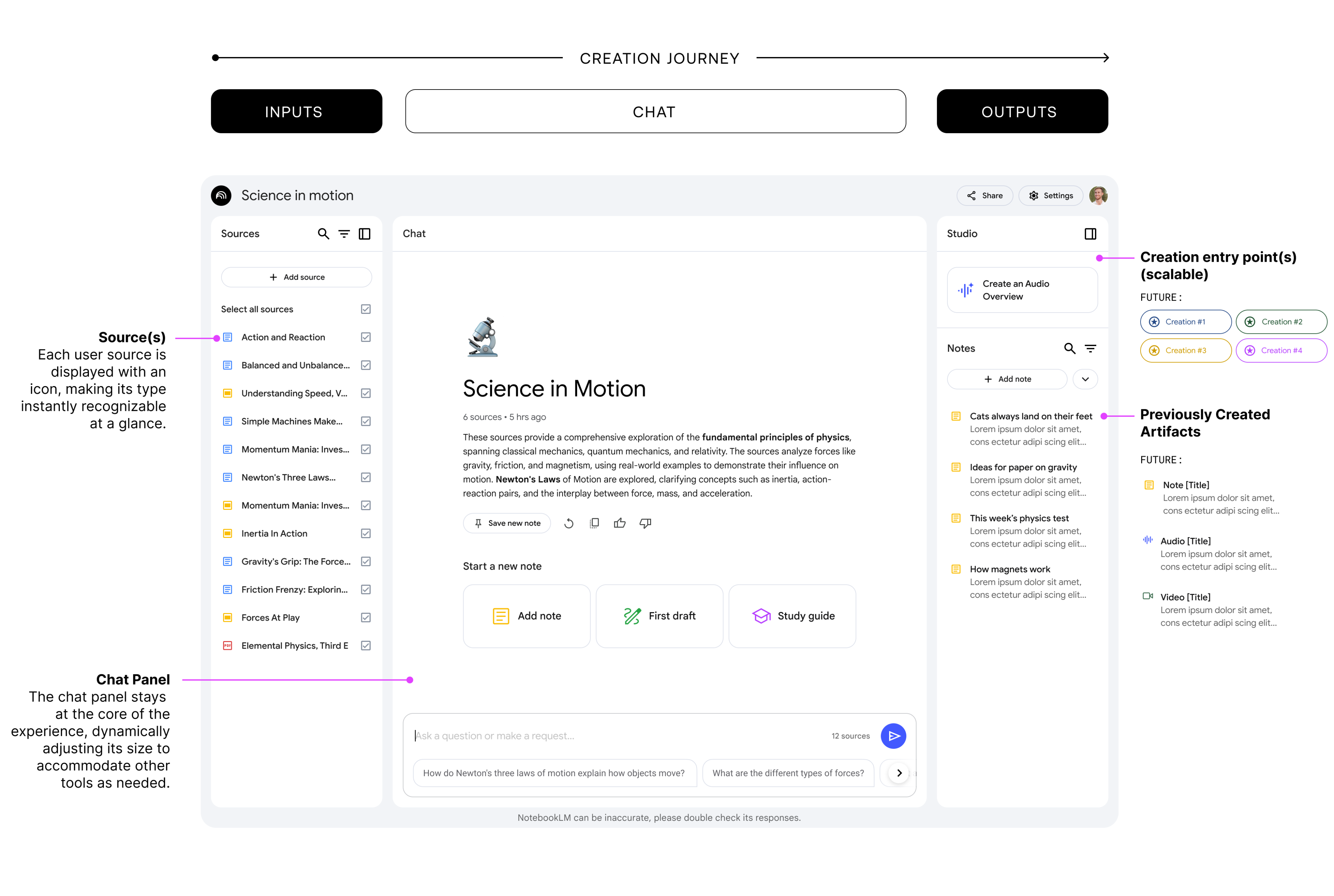
Home
Next
Jason Spielman
Design Lead
UX + Identity
2024
I led design for NotebookLM, shaping the product’s core user experience, brand identity, and visual system from experiment to launch.
This remains one of my proudest projects, and I’m incredibly grateful for the opportunity to design something entirely new from the ground up. It was a chance to explore fresh paradigms, invent new patterns, and bring a product to life that hadn’t existed before. None of it would’ve been possible without the tight-knit, cross-functional team I was fortunate to collaborate with.

Podcast • Sequoia
Raiza and I discuss the journey building NotebookLM.
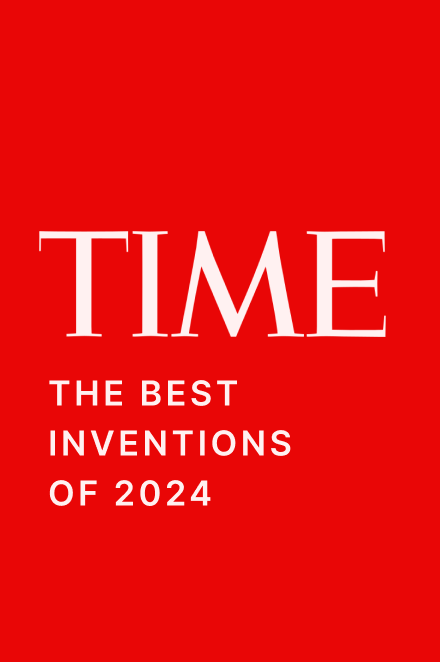
NotebookLM • Winner!
Recognized as one of TIME’s Best Inventions of 2024.
|
Architecture
|
3 Panel
|
Visual Assets
|
Architecture

UI Evolution

Early Prototype
This is what the UI looked like when I first joined the early project.

Notes driven UI
Exploratory chat UI introduced as an overlay on the note canvas.

3-Panel Structure
Synthesizes learnings into a scalable and adaptive layout.
One of the core problems we set out to solve with NotebookLM was “tab overwhelm” the scattered, fractured experience of jumping between tools while trying to synthesize ideas. We wanted to create a space where every part of the creation journey could happen in one place.
→ Inputs
Outputs →
Chat
• Citations
Creation
• Multiple entry points
This visual shows how the core building blocks came together.

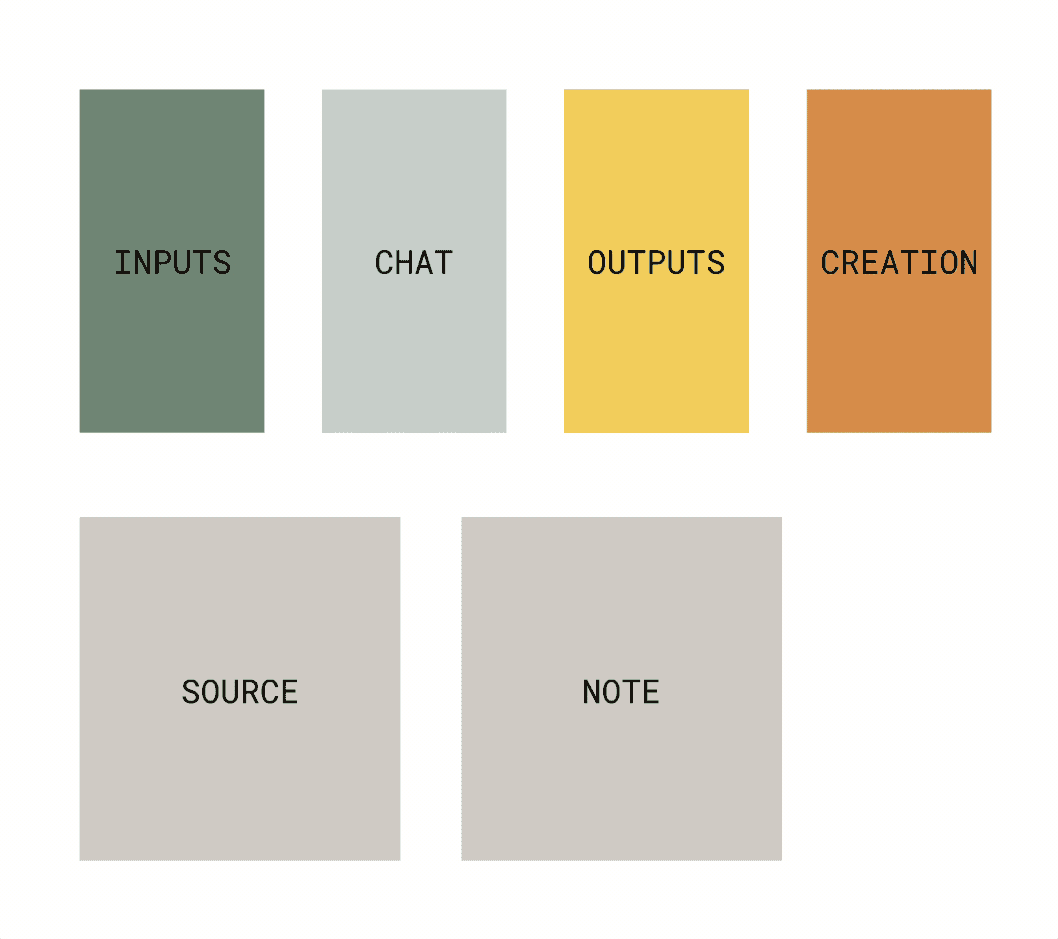
The structure you see now may seem obvious but it took After what felt like 1000 iterations to get there. Trying to put these blocks together in a way that allowed for a clear mental model and digstible UI. These early sketches are from a plane. I ran out of paper and ultimately found the final solution when drawing on a napkin.
The mental model of NotebookLM was built around the creation journey: starting with inputs, moving through conversation, and ending with outputs. Users bring in their sources (documents, notes, references), then interact with them through chat by asking questions, clarifying, and synthesizing before transforming those insights into structured outputs like notes, study guides, and Audio Overviews.
By grounding the design in this linear but flexible flow (Inputs → Chat → Outputs) we gave users a clear sense of place within the product while keeping the complexity of new AI interactions digestible and intuitive.

It’s rare to find a product that brings reading, writing, and creation together in a truly integrated way largely because juggling all three can be overwhelming. But with AI reducing friction, the opportunity emerged to design a space where every part of the creative process could coexist.
To make that possible, I designed a responsive panel system that adapts to the user’s needs, scaling fluidly while preserving quick access to key elements like sources and notes, even at the smallest sizes.


The default layout, offering a balanced view of sources, chat, and notes.
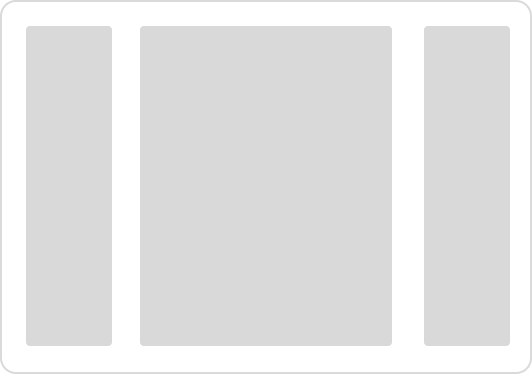
Optimized for referencing sources and generating responses with citations.

A popular request, designed for users focused on drafting and iteration.
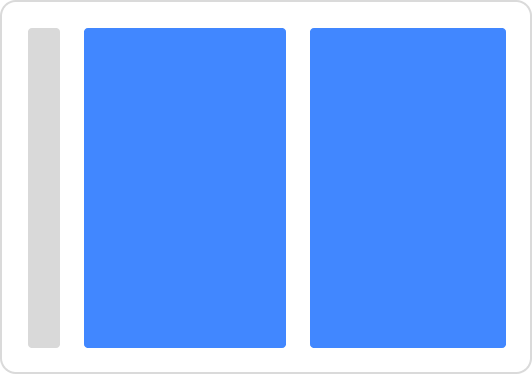
Ideal for composing while keeping source material in view.
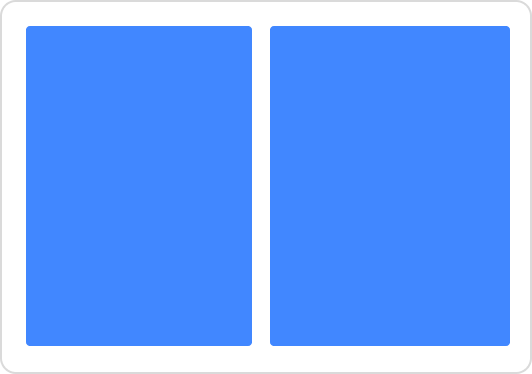
To optimize spatial utility, I created a set of responsive panels that scale based on user needs, retaining essential icons for sources and notes even at minimal widths.
Scalability was a core principle. While the content within these panels can shift and evolve, the underlying system is built to support growth, accommodating new tools, modes, and workflows without breaking the structure.
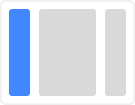
Source Panel
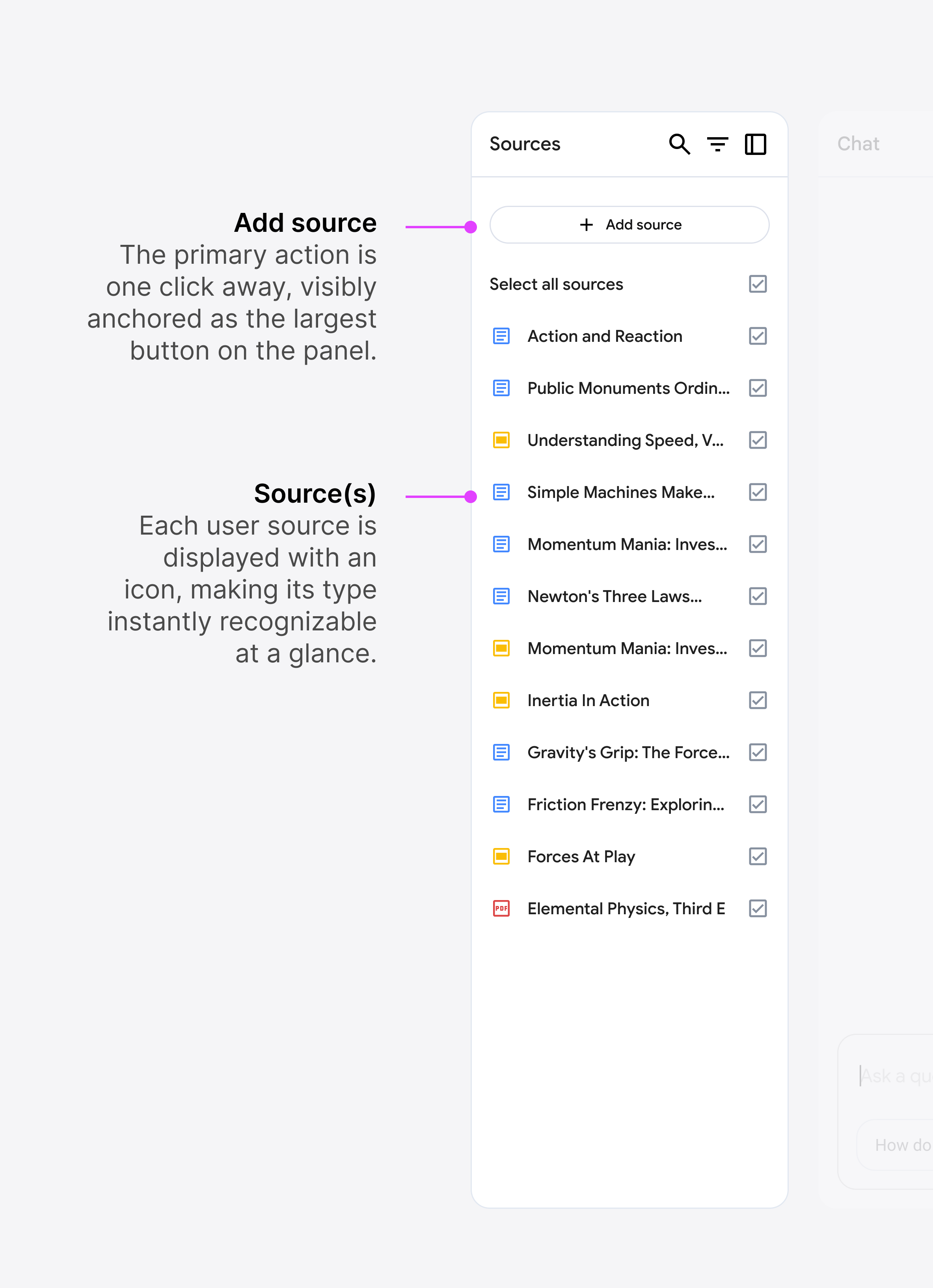

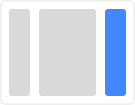
Studio Panel
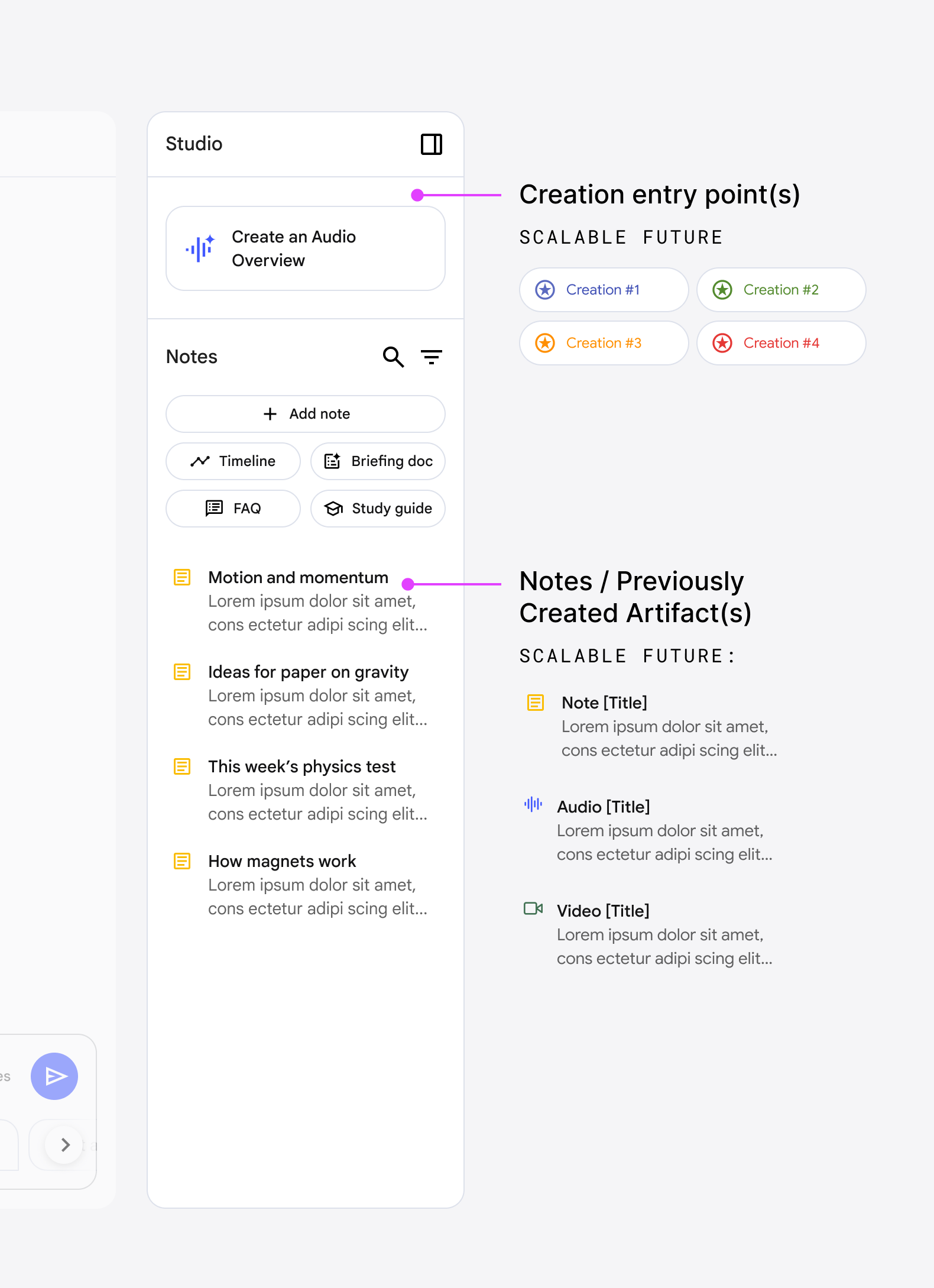
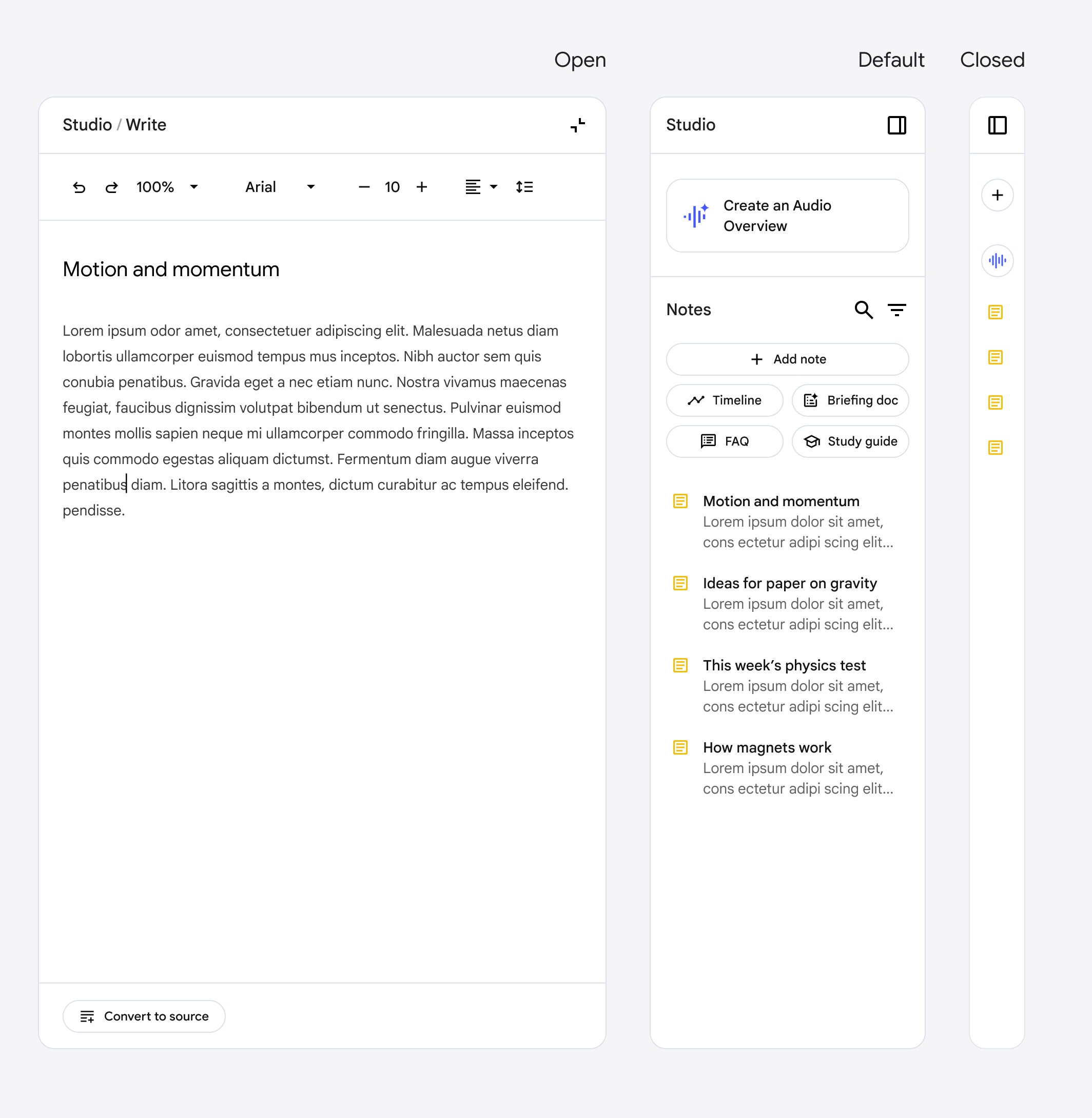
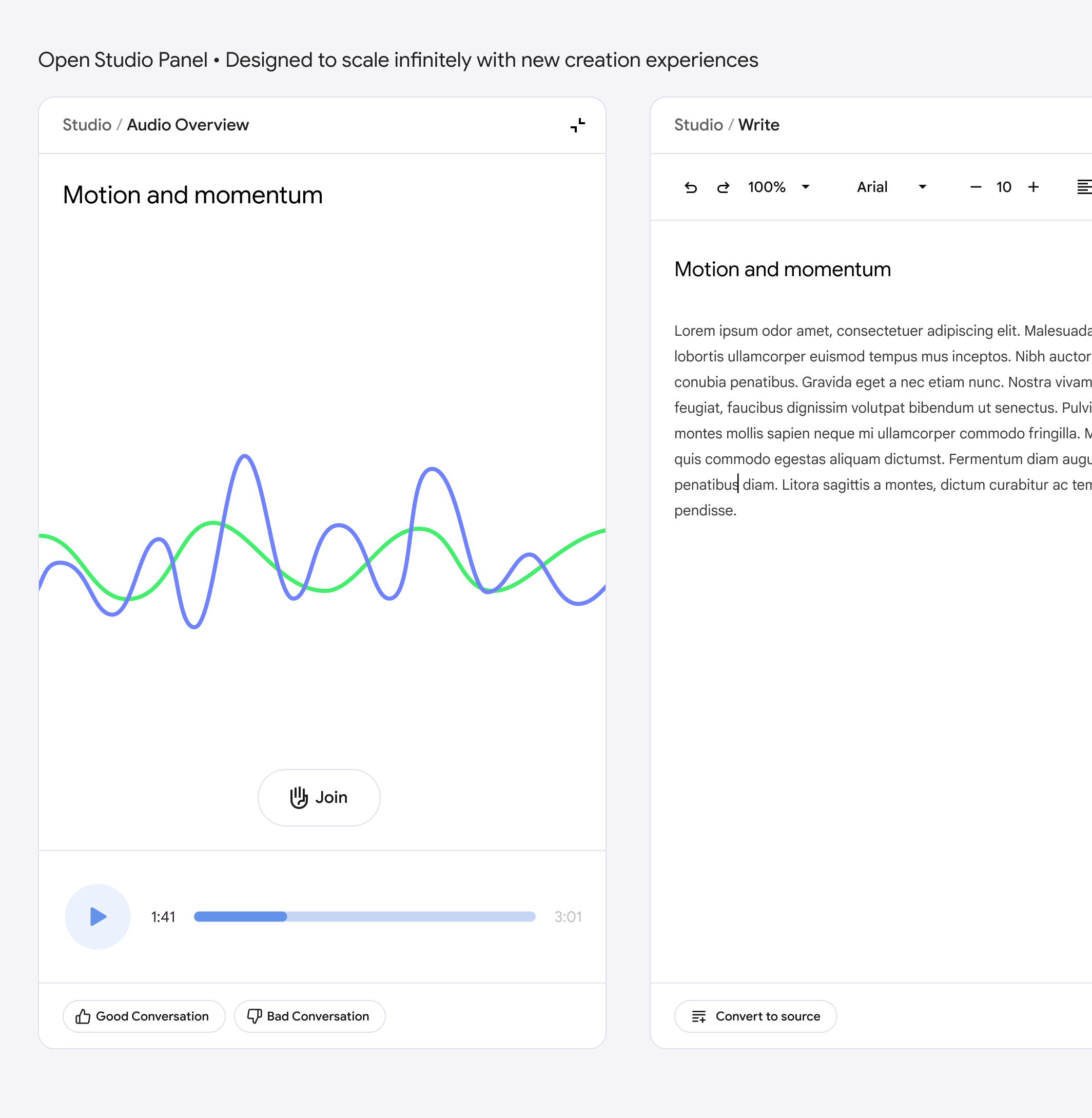
See how the team has continued to scale this system with the newest launch of flashcards, quizzes, professional reports.
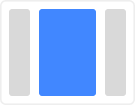
Chat Panel
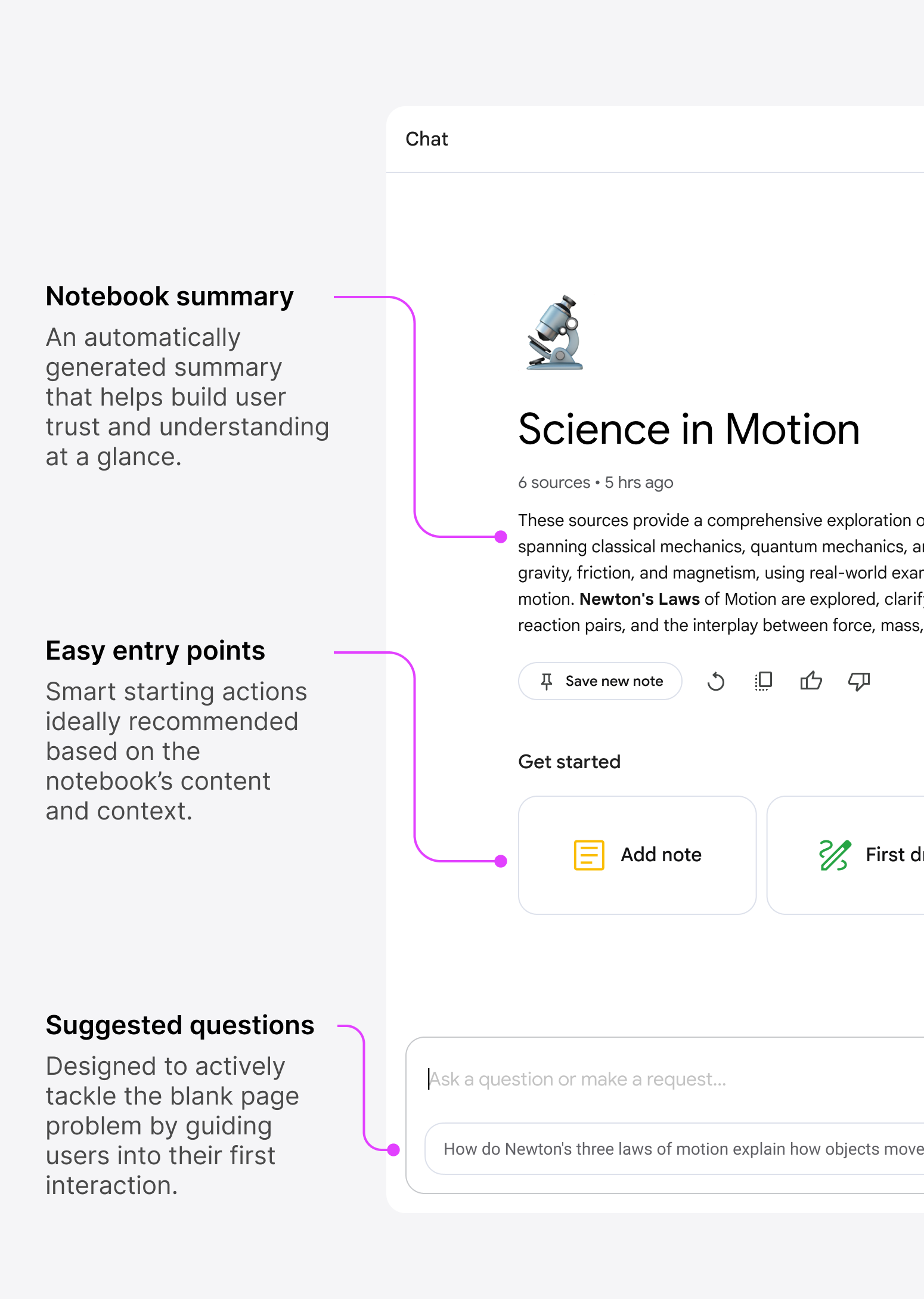
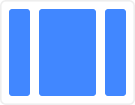
Here’s what that looks like:

User Journey • Annotated Overview

Read the full story

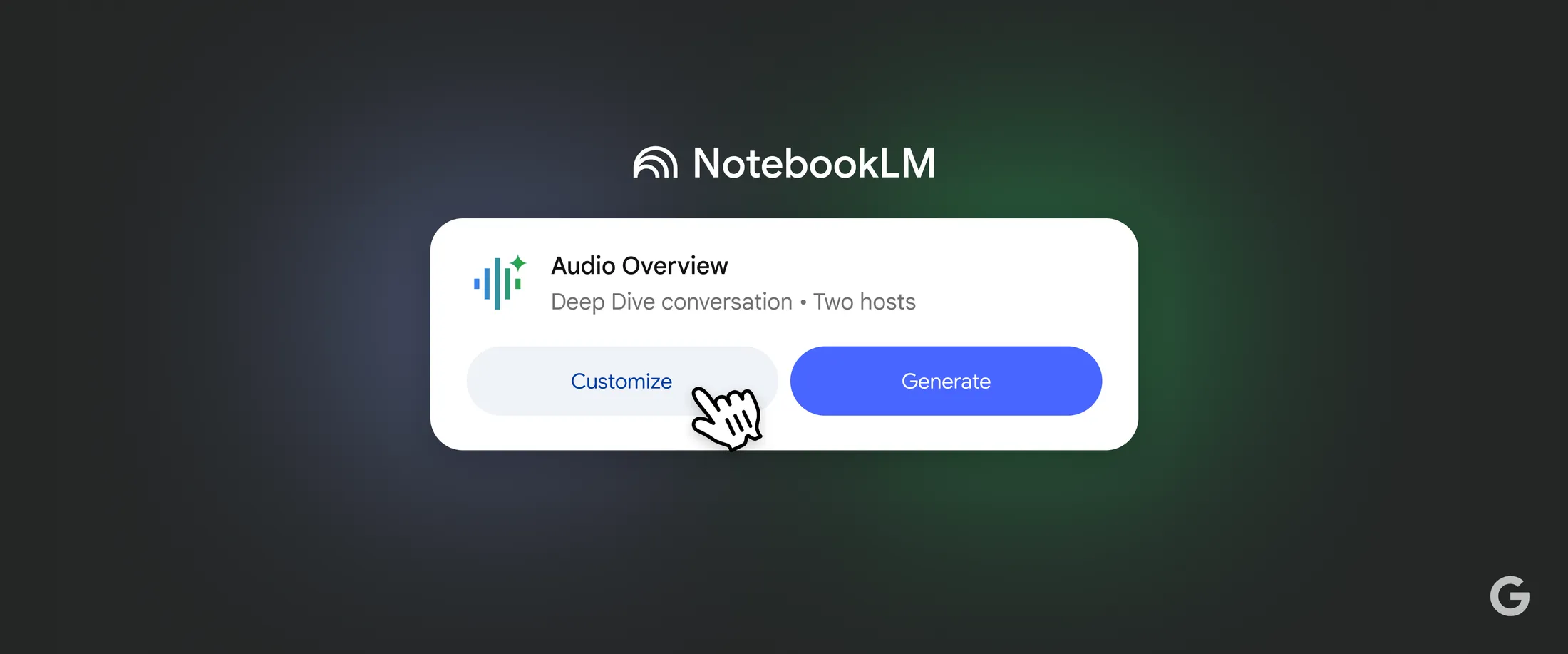
Defining the brand identity was a fast-paced effort, made possible by close collaboration with Google Labs and the central brand team. Shoutout Feel Hwang, Nick Mcginnis, Jennifer Leartanasan and team.

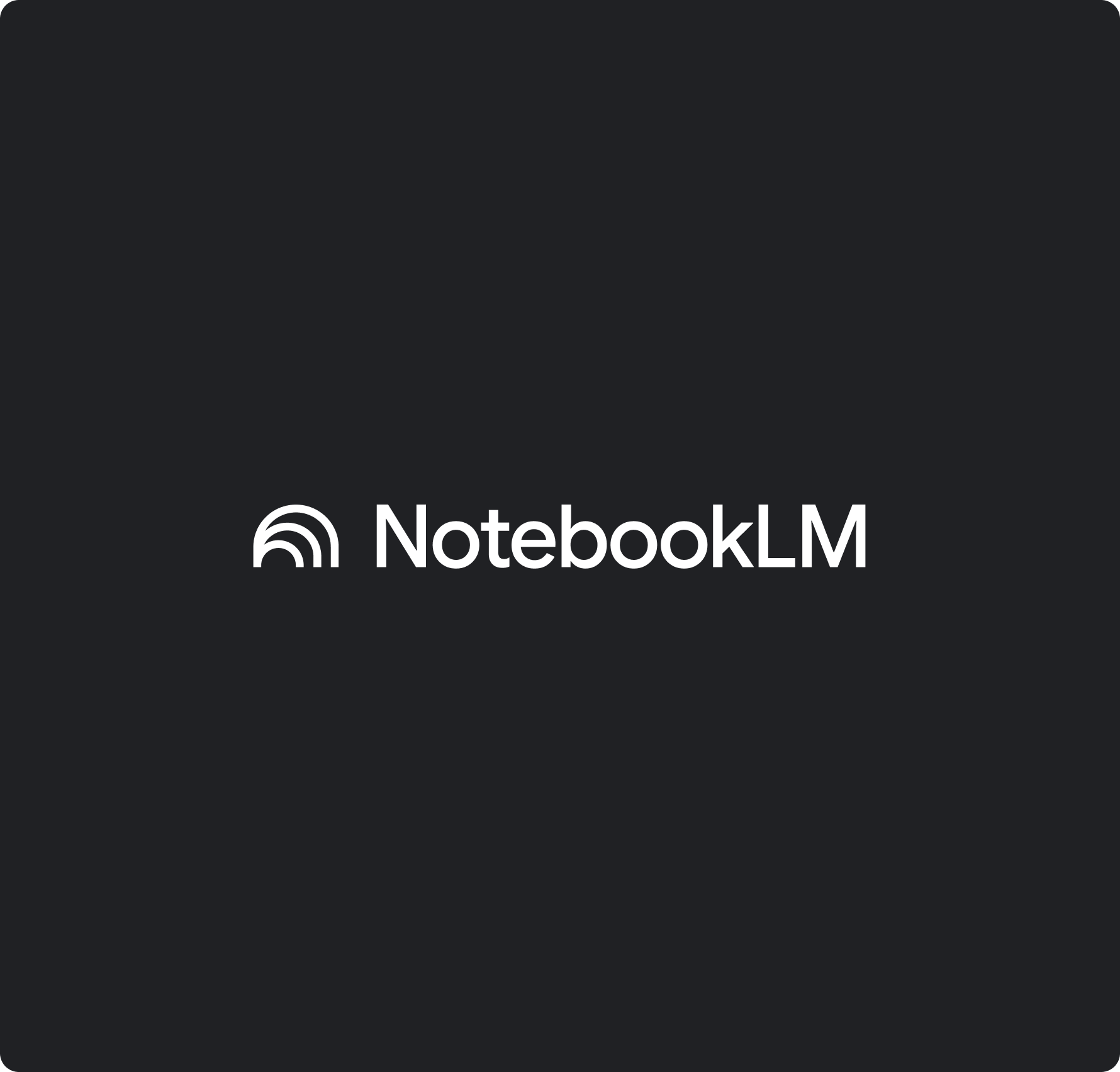


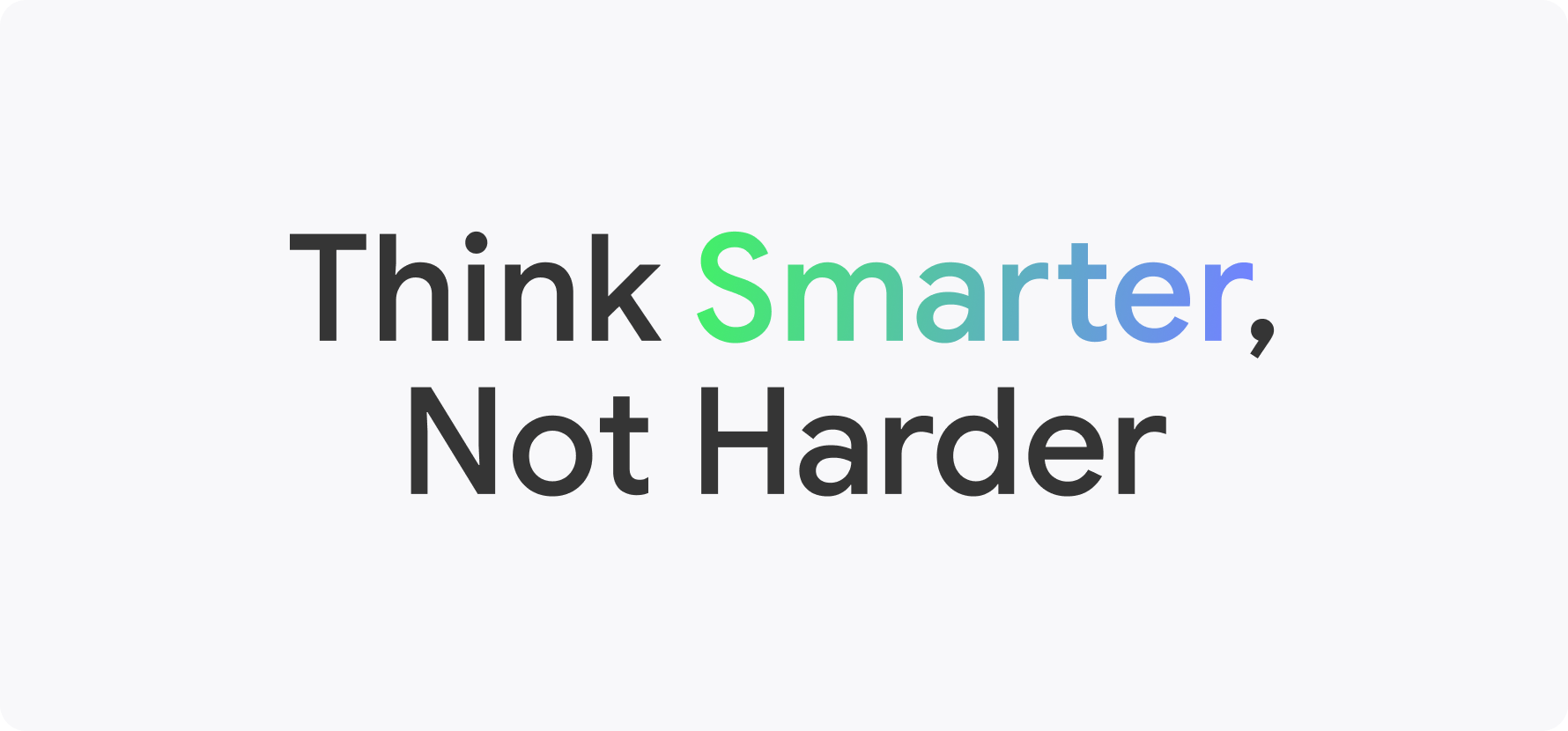
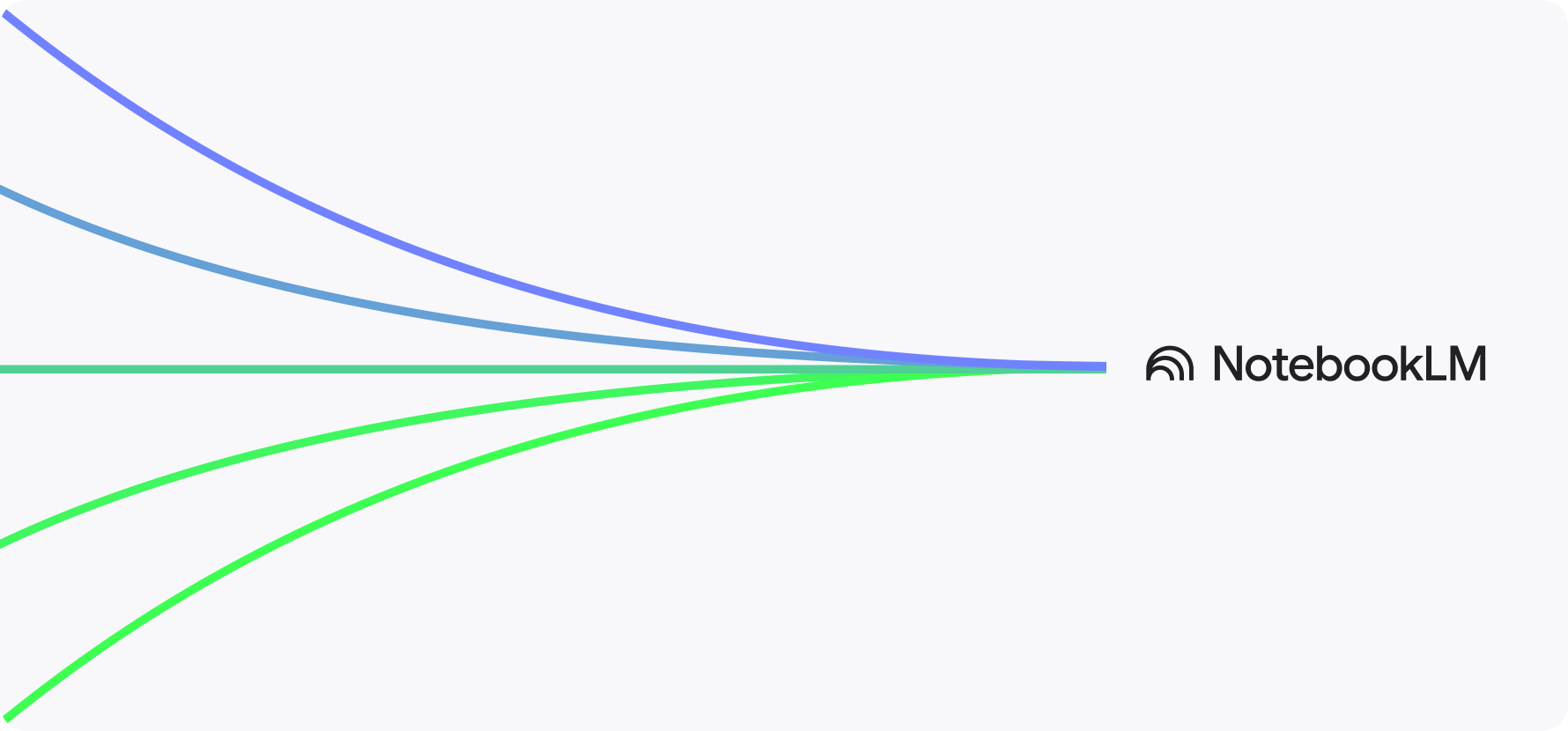


Jason Spielman
Linkedin →

Jason Spielman
Linkedin →
Home
Next
Jason Spielman
Design Lead
UX + Identity
2024
I led design for NotebookLM, shaping the product’s core user experience, brand identity, and visual system from experiment to launch.
This remains one of my proudest projects, and I’m incredibly grateful for the opportunity to design something entirely new from the ground up. It was a chance to explore fresh paradigms, invent new patterns, and bring a product to life that hadn’t existed before. None of it would’ve been possible without the tight-knit, cross-functional team I was fortunate to collaborate with.
|
Architecture
|
3 Panel
|
Brand Identity
|
Visual Assets
|
Takeaways
Architecture

UI Evolution

Early Prototype
This is what the UI looked like when I first joined the early project.

Notes driven UI
Exploratory chat UI introduced as an overlay on the note canvas.

3-Panel Structure
Synthesizes learnings into a scalable and adaptive layout.
One of the core problems we set out to solve with NotebookLM was “tab overwhelm” the scattered, fractured experience of jumping between tools while trying to synthesize ideas. We wanted to create a space where every part of the creation journey could happen in one place.
→ Inputs
Outputs →
Chat
• Citations
Creation
• Multiple entry points
This visual shows how the core building blocks came together.


The structure you see now may seem obvious but it took After what felt like 1000 iterations to get there. Trying to put these blocks together in a way that allowed for a clear mental model and digstible UI. These early sketches are from a plane. I ran out of paper and ultimately found the final solution when drawing on a napkin.
The mental model of NotebookLM was built around the creation journey: starting with inputs, moving through conversation, and ending with outputs. Users bring in their sources (documents, notes, references), then interact with them through chat by asking questions, clarifying, and synthesizing before transforming those insights into structured outputs like notes, study guides, and Audio Overviews.
By grounding the design in this linear but flexible flow (Inputs → Chat → Outputs) we gave users a clear sense of place within the product while keeping the complexity of new AI interactions digestible and intuitive.
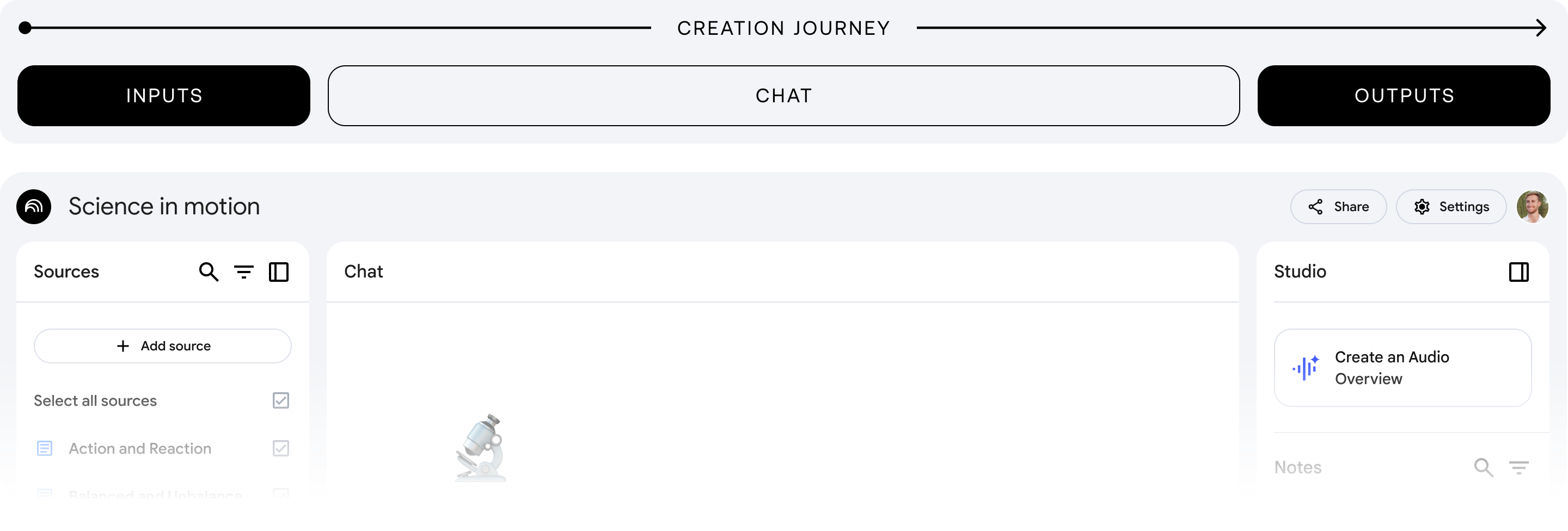
It’s rare to find a product that brings reading, writing, and creation together in a truly integrated way largely because juggling all three can be overwhelming. But with AI reducing friction, the opportunity emerged to design a space where every part of the creative process could coexist.
To make that possible, I designed a responsive panel system that adapts to the user’s needs, scaling fluidly while preserving quick access to key elements like sources and notes, even at the smallest sizes.



Standard
The default layout, offering a balanced view of sources, chat, and notes.

Reading + Chat
Optimized for referencing sources and generating responses with citations.
To optimize spatial utility, I created a set of responsive panels that scale based on user needs, retaining essential icons for sources and notes even at minimal widths.
Scalability was a core principle. While the content within these panels can shift and evolve, the underlying system is built to support growth, accommodating new tools, modes, and workflows without breaking the structure.

Source Panel
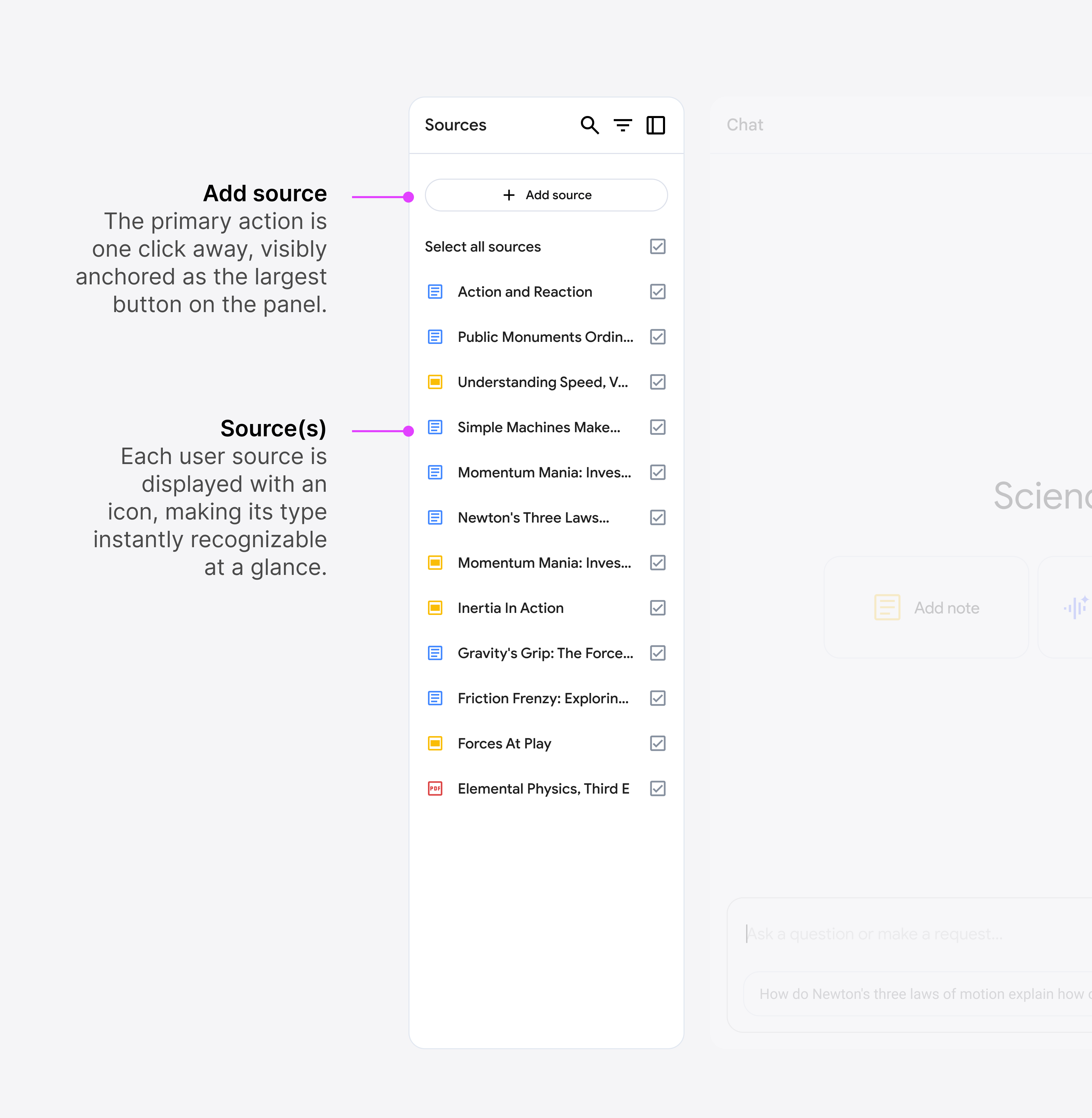


Studio Panel



See how the team has continued to scale this system with the newest launch of flashcards, quizzes, professional reports.

Chat Panel
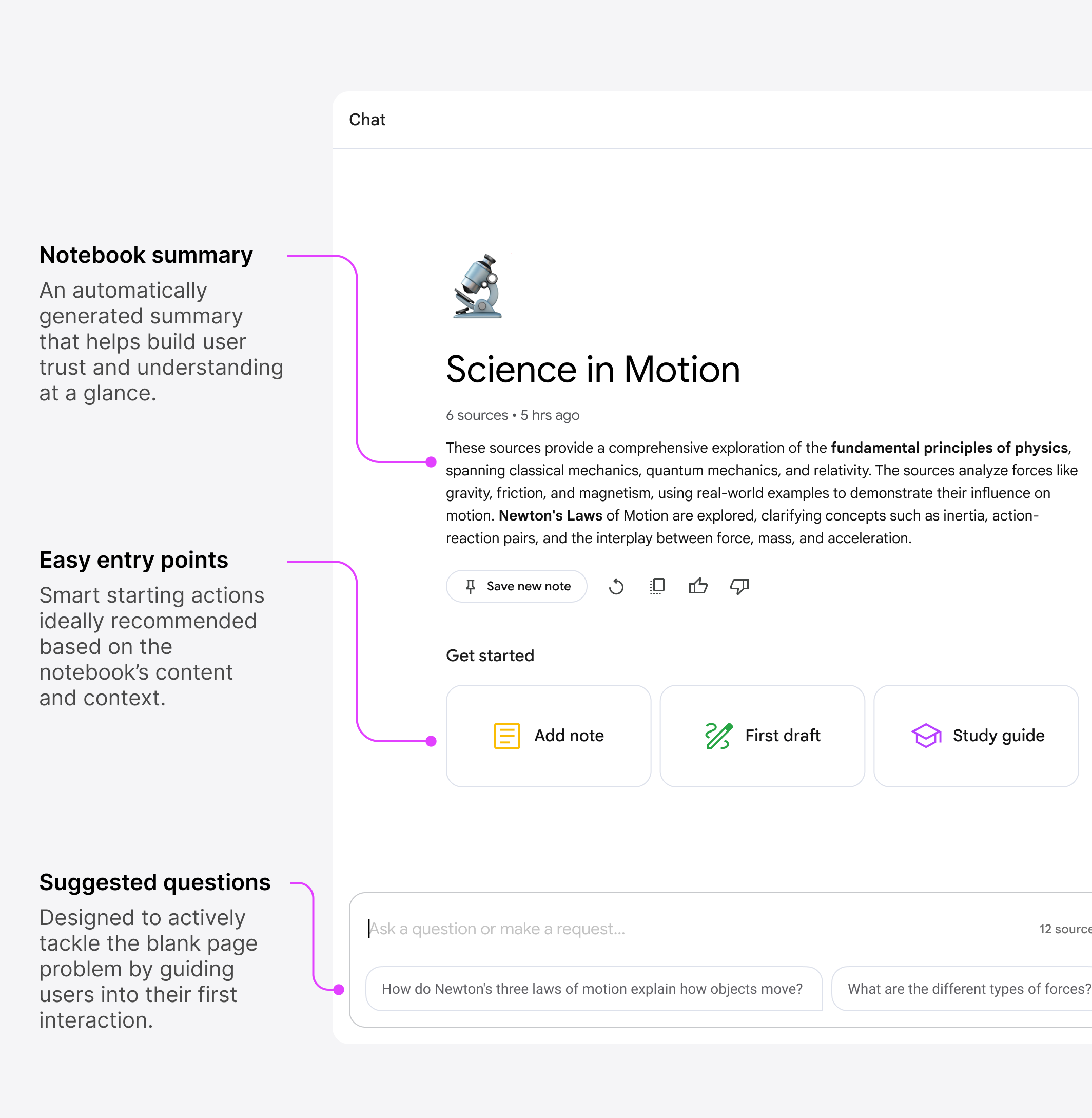

Here’s what that looks like:

User Journey • Annotated Overview

Read the full story


Defining the brand identity was a fast-paced effort, made possible by close collaboration with Google Labs and the central brand team. Shoutout Feel Hwang, Nick Mcginnis, Jennifer Leartanasan and team.








Jason Spielman
Linkedin →

Wanda Wingleton
Linkedin →
Home
Next
Jason Spielman
Design Lead
UX + Identity
2024
I led design for NotebookLM, shaping the product’s core user experience, brand identity, and visual system from experiment to launch.
This remains one of my proudest projects, and I’m incredibly grateful for the opportunity to design something entirely new from the ground up. It was a chance to explore fresh paradigms, invent new patterns, and bring a product to life that hadn’t existed before. None of it would’ve been possible without the tight-knit, cross-functional team I was fortunate to collaborate with.
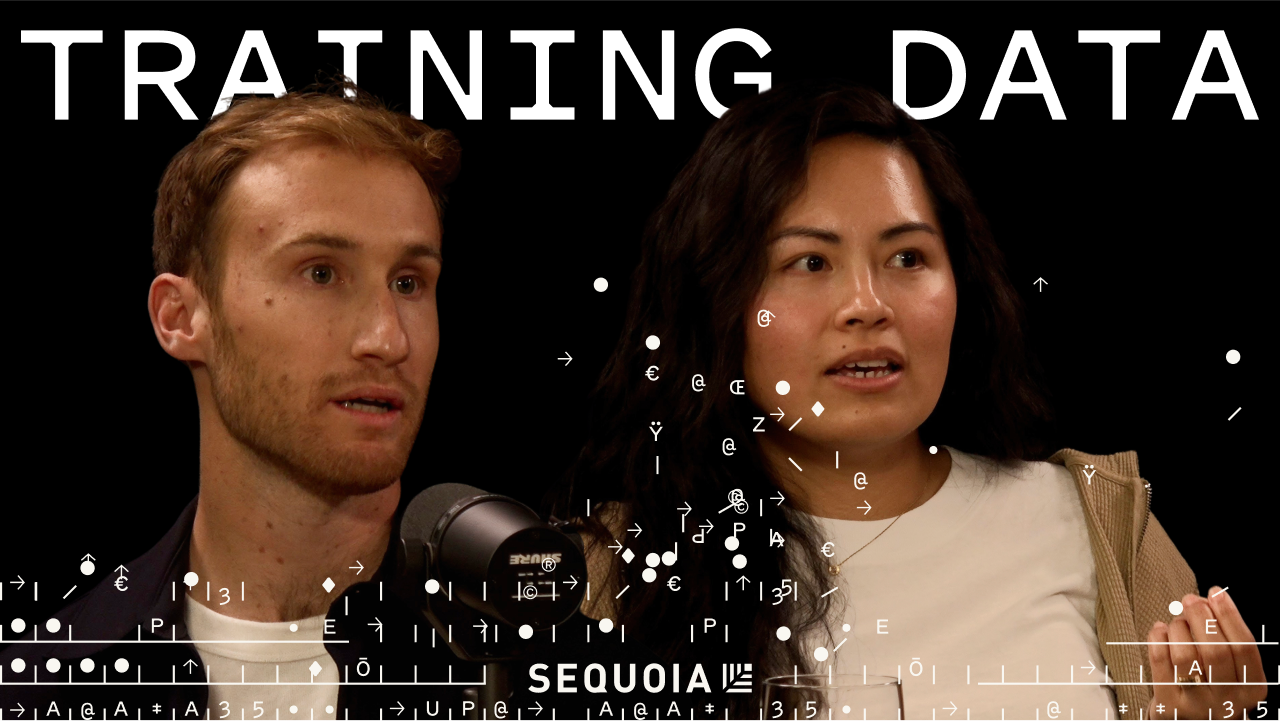
Podcast • Seqouia Training Data
Raiza and I discuss the journey building NotebookLM.
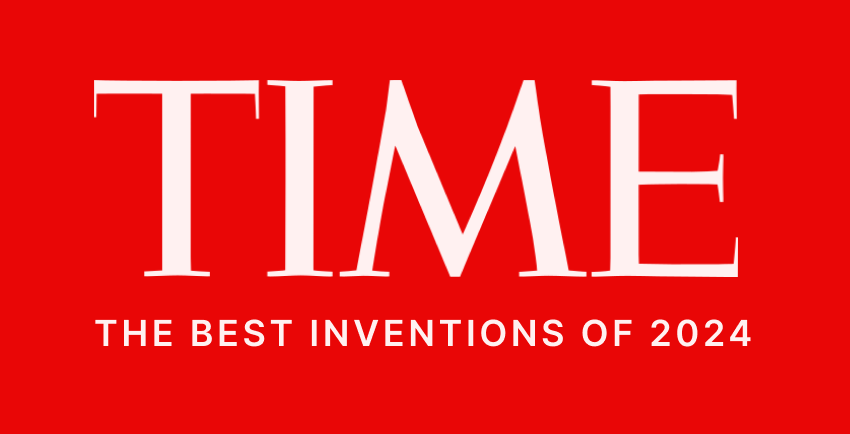
NotebookLM • Winner!
Recognized as one of TIME’s Best Inventions of 2024.
|
Architecture
|
3 Panel
|
Brand Identity
|
Visual Assets
|
Takeaways
Architecture

Design Evolution

Early Prototype
This is what the UI looked like when I first joined the early project.

Notes driven UI
Exploratory chat UI introduced as an overlay on the note canvas.

3-Panel Structure
Synthesizes learnings into a scalable and adaptive layout.
One of the core problems we set out to solve with NotebookLM was “tab overwhelm” the scattered, fractured experience of jumping between tools while trying to synthesize ideas. We wanted to create a space where every part of the creation journey could happen in one place.
→ Inputs
Outputs →
Chat
• Citations
Creation
• Multiple entry points
This visual shows how the core building blocks came together.


The structure you see now may look obvious but it took what felt like a thousand iterations to get there. I was trying to arrange these blocks in a way that supported a clear mental model and a UI that felt intuitive and digestible.
These sketches were done on a plane. I ran out of paper and ended up sketching the final solution across a few napkins.
The mental model of NotebookLM was built around the creation journey: starting with inputs, moving through conversation, and ending with outputs. Users bring in their sources (documents, notes, references), then interact with them through chat by asking questions, clarifying, and synthesizing before transforming those insights into structured outputs like notes, study guides, and Audio Overviews.
By grounding the design in this linear but flexible flow (Inputs → Chat → Outputs) we gave users a clear sense of place within the product while keeping the complexity of new AI interactions digestible and intuitive.

It’s rare to find a product that brings reading, writing, and creation together in a truly integrated way largely because juggling all three can be overwhelming. But with AI reducing friction, the opportunity emerged to design a space where every part of the creative process could coexist.
To make that possible, I designed a responsive panel system that adapts to the user’s needs, scaling fluidly while preserving quick access to key elements like sources and notes, even at the smallest sizes.



Standard
The default layout, offering a balanced view of sources, chat, and notes.

Reading + Chat
Optimized for referencing sources and generating responses with citations.

Chat + Writing
A popular request, designed for users focused on drafting and iteration.

Reading + Writing
Ideal for composing while keeping source material in view.
To optimize spatial utility, I created a set of responsive panels that scale based on user needs, retaining essential icons for sources and notes even at minimal widths.
Scalability was a core principle. While the content within these panels can shift and evolve, the underlying system is built to support growth, accommodating new tools, modes, and workflows without breaking the structure.

Source Panel



Studio Panel
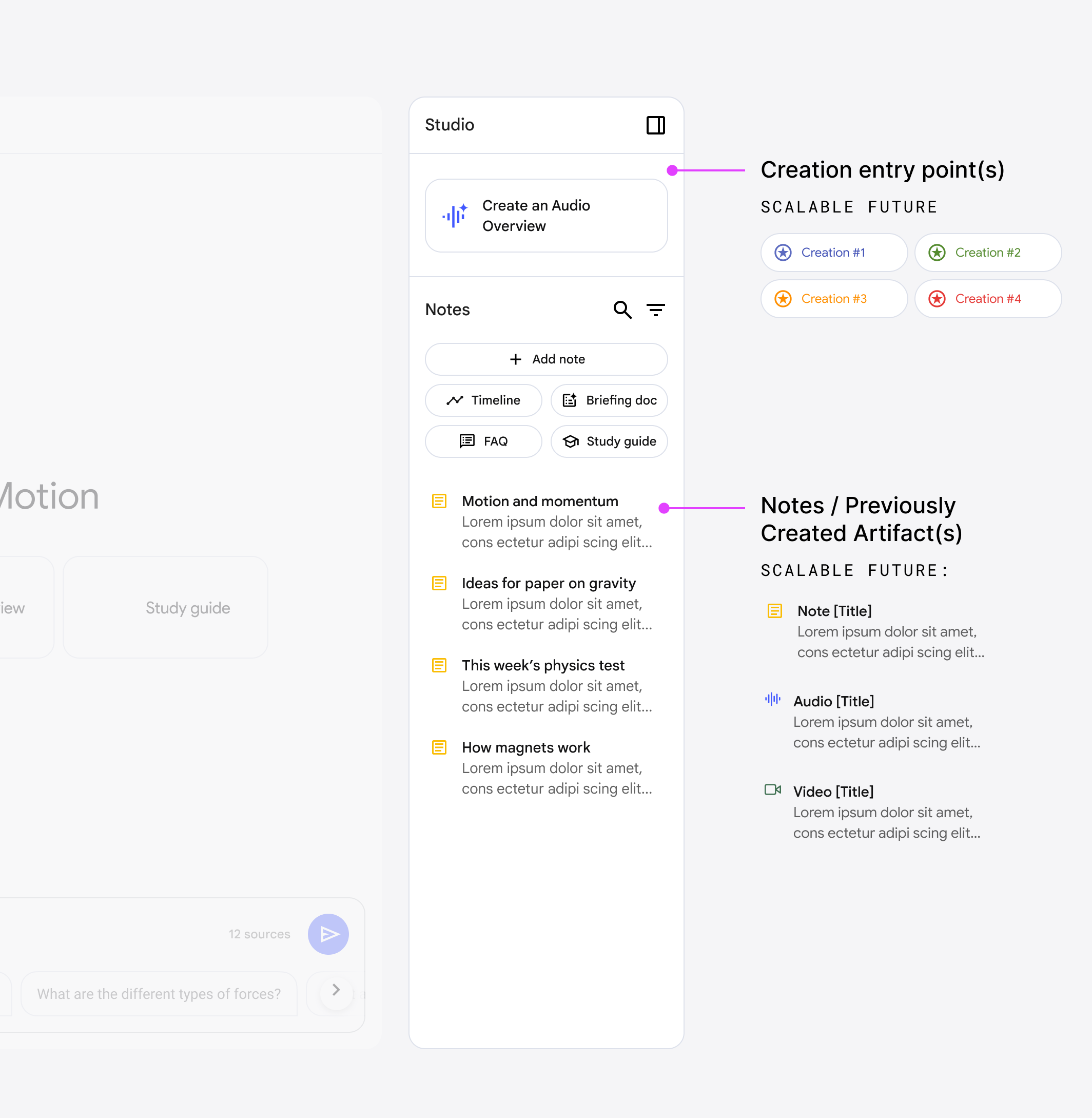


See how the team has continued to scale this system with the newest launch of flashcards, quizzes, professional reports.

Chat Panel


Here’s what that looks like:


Read the full story


Defining the brand identity was a fast-paced effort, made possible by close collaboration with Google Labs and the central brand team. Shoutout Feel Hwang, Nick Mcginnis, Jennifer Leartanasan and team.








Jason Spielman
Linkedin →

Jason Spielman
Linkedin →